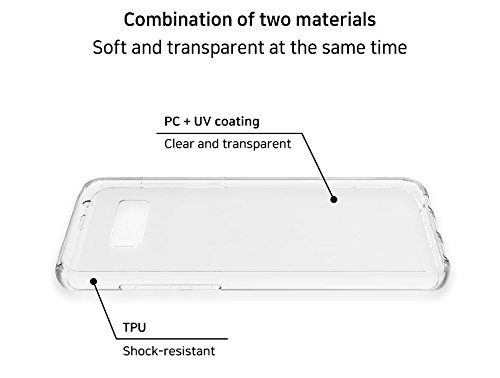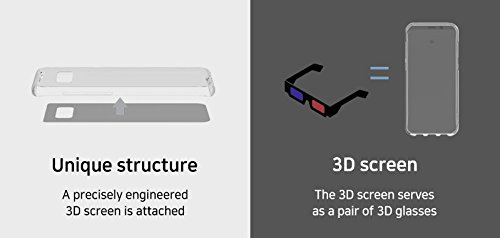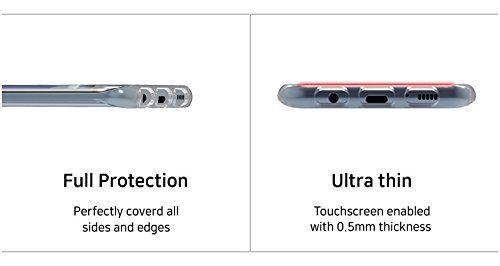LED industry winds up the core technology to decide whether to win or lose
2010 can be called "LED lighting first year, LED lighting this year is almost a spurt of development, the global LED lighting industry quickly formed a scale. At the same time, the production cost of LED lighting products is also a great decline, It is understood that in the second half of 2010, the final price of LED lighting will only drop by 30% in only 6 months."
Galaxy Note8 3D
Viewer is s 3D Virtual Reality Functional Case, 3D capable smartphone case that replaces 3D
glasses.It compatible with Samsung Galaxy note 8
Supple Wide without Camera Hole: Watch 3D in full-screen
mode with access to the rear facing camera
Features: Designed to fit on both the front and back of
the device, transparent PC back allows excellent touchscreen responsiveness and
shock-resistant TPU offers full protection to the device
Pair the Snap3D with Mplayer3D application to enjoy
amazing 3D effect
Notice: Do not use a glass protector with the Snap3D.
When used as a 3D screen, touchscreen does not work
Galaxy Note8 3D Viewer,Galaxy Note8 Vr Viewer,3D Viewer For Galaxy Note8,Vr Viewer For Galaxy Note8 iSID Korea Co., Ltd , http://www.isidsnap3d.com
It is reported that the global LED lighting market continues to grow due to the energy crisis and the increasing awareness of energy conservation and environmental protection. Because the LED industry integrates technology and capital intensively, the EU, the United States, Japan, South Korea and Taiwan Province of China are constantly increasing investment, guiding research institutions and enterprises to focus on research and development of high-end LED technology and new products, and to seize the technology of the LED lighting industry. Commanding heights.
LED is "full" to capture the lighting industry
According to research data, because LED is a cold light source, semiconductor lighting itself has no pollution to the environment. Compared with incandescent lamps and fluorescent lamps, the power saving efficiency can reach more than 70%. At the same brightness, the power consumption is only 1/10 of that of ordinary incandescent lamps, and 1/2 of fluorescent tubes. If LEDs are used to replace 50% of our current traditional lighting fixtures , the amount of electricity saved in China is equivalent to that of a Three Gorges Power Station. The sum of the quantities, the energy-saving benefits are considerable.
According to the situation observed in the relevant market, the demand for LED lighting has been increasing. Especially after the product technology research and development results have been born in recent years, the overall product cost has also declined to some extent, and the luminous efficiency has also increased. LED lighting is gradually able to debut in the main lighting field, and there are more and more replacement lamps and lamps using LEDs as light sources.
Nowadays, the LED indoor lighting market has great potential, and various forms of LED lights have appeared on the market. For example, in October Donglin Electronics participated in the international lighting exhibition in Hong Kong. At this exhibition, if there is no LED energy-saving lamp in a lighting booth, there is almost no customer to see it. Jia Qiang said that LED lighting now has a very large development prospect, because it has great market potential both in terms of technological progress and cost.
At present, the development of LED lighting has become one of the major power-saving industries in many countries. In 2007, Australia introduced the first ban on the use of incandescent lamps. The EU also passed regulations on the elimination of incandescent lamps in March 2009. .
Relevant organizations predict that LED bulb shipments will increase significantly, and the output value is estimated to be as high as about 8 billion US dollars. In terms of output value, the global LED lighting market will penetrate 10% in 2011. The agency also pointed out that in 2012 After that, LED manufacturers began to focus on the general lighting market, and many countries began to replace LED street lights and LED lighting. Under the influence of factors such as annual price decline of 30%, the penetration rate of global LED lighting output value will further increase to nearly 20% in 2013. .
"In the next two years, LED lighting will inevitably develop rapidly. However, due to the fact that the outside world is slightly overheated in the promotion of LED lighting, the perception of consumers may be misled, and the expectation of LED is too high. So I predict that LED In the future development, there will be two stages, that is, from the beginning of the explosive growth period, and then finally to the rational and steady growth stage." Jia Qiang said.
4th generation and half technology, maybe we can do it.
Donglin Electronics has entered the traditional energy-saving lamp industry since 1995. Later, since the development of LED lighting was found to be very good, in 2006, the development and production of LED energy-saving lamps began.
"When we first entered the LED lighting industry, we found that almost all of the core technologies of LED lighting were in the hands of foreign companies. So we came up with the idea of ​​developing our own core technology and owning our own intellectual property in the field of LED lighting. Eastern Electronics is from the beginning of this new technology OLED technology research and development of LED lighting. OLED technology as one of the important technical branch, there is a very large space for development. at present, there are a number of companies engaged in the technology research and development projects, But basically in the field of display. Donglin Electronics is the first and only company in China to develop OLED lighting technology. "Jia Qiang introduced.
Now it seems that the explosive growth of the world LED industry is an unquestionable fact. In the face of huge market opportunities, the world's major LED companies are stepping up research and development, new technologies continue to make breakthroughs, LED lighting technology innovation The pace is constantly accelerating. At present, the LED lighting industry has formed a three-legged industrial distribution and competition pattern dominated by the three regions of the United States, Asia and Europe.
The five giants such as Nichia, Toyota Synthetic, Cree, Philips and Osram have monopolized the high-end products market. They use their innovative advantages in new products and new technologies, mainly engaged in the production of high value-added products. These five major companies have their own characteristics in product technology. Nichia and Toyota Synthetic have an important position in the development of LED, and have formed a complete industrial chain of LEDs. Among them, Nichia Corporation first produced blue light chips in 1994, and It has a monopoly advantage in the patented technology of sapphire substrate technology. American CREE Company has formed a complete LED industrial chain on the silicon carbide substrate technology route, and has a monopoly advantage in patent technology. Lumi leds (Philips Lumens) focuses on the development of high-power LEDs and is strong in white lighting. Germany's Osram has advantages in thin film chips and phosphors .
However, China, as the world's largest LED manufacturing country, does not currently have a complete LED lighting production line. Jia Qiang said with regret, "Now, Chinese enterprises are only a low-end producer in the industrial chain. Although the governments at all levels are currently supporting LED lighting, there is no breakthrough in the domestic core technology equipment. This is a big technical constraint."
At present, there are only two manufacturers of technical equipment for producing LED energy-saving lamp chips, one in Europe and one in the United States. Most of China's lighting companies are currently working indirectly for foreign companies. The government's promotion of the production and use of LED energy-saving lamps is actually driving their production because all the chips are purchased from them. There is no complete industrial chain in China, and there is no core equipment, which is the biggest potential shortage in technology. Jia Qiang said.
In 2001, when the EU implemented anti-dumping on energy-saving lamps in China, Donglin Electronics was the only company in China that actively responded to the lawsuit. During the eight years of the lawsuit, Donglin Electronics had been actively responding and finally won.
However, during the interview, Jia Qiang, the first person in the lighting industry to anti-dumping, was worried. He believed that in the near future, the world would form a technical patent barrier against China. How to deal with this? For example, Jia Qiang said that in the future, a product should be sold to Japan. The other party must require your chip to be produced in Japan, otherwise it will not let you export.
"China can't be a low-end producer. If you want a technological breakthrough to achieve technological leadership, you must first have this desire and philosophy. To develop core technologies and form national brands, you must work hard. This requires a lot of capital investment, maybe The possibility of success is not great, but if Chinese companies can work like this, the possibility of success is great." Jia Qiang said.
The first four generations of technology in the lighting industry have little to do with us. The current OLED is a 4th and a half generation lighting technology. At this stage, we are likely to have our own leading core technology. Now Donglin Electronics' OLED R&D technology has been included in the national “863†plan, but in the long run, there is still a long way to go before OLED lighting can realize commercial profits.
"This is not a matter of making money, but we have to do it." Jia Qiang said.
Industry standards need to be formulated as soon as possible
Standards have always been one of the hot topics in the LED industry. The lack of standards and standard lag have always been the bottleneck in the development of the LED industry. In 2010, national and industry standards for LEDs were intensively introduced, but it still takes time to test whether these standards can truly become guidelines for guiding production.
It is undeniable that the introduction of LED lighting standards in China is indeed slow, and the reasons are manifold. LED belongs to the traditional electronic components industry, also belongs to the optical and optoelectronic industry. When it comes to lighting, LED also involves lighting industry and light source industry. From the standard setting, since LEDs span multiple industries, it requires multi-party communication and coordination in the formulation of standards power and responsibility. In addition, because LED lighting is a new technology, professional committees in the traditional industry do not know much about it. China lacks companies with large enough volume and sufficient influence on the industry, which adds a little extra to the standard. Difficulty. In addition, LED technology is not a mature technology, its technology is not stereotyped, technology development changes rapidly, and it also brings certain difficulties to the formulation of standards.
Many experts said that with the in-depth development of economic globalization and the increasingly fierce competition in the international market, the role and status of standards have become increasingly prominent. Standard competition has become a form of competition after product competition and brand competition, which has a deeper level, higher level and greater influence. For the LED industry, it is imperative to introduce and issue national standards as soon as possible, implement standard strategies, promote technological advancement of enterprises, enhance corporate competitiveness, and promote the healthy and orderly development of the LED industry.
However, Jia Qiang expressed his understanding of this issue. He said that the slogan of Donglin Electronics is "the life of the lamp determines the life of the company." Ten years ago, when Donglin Electronics started the production of traditional energy-saving lamps, the introduction of relevant government standards was a lot late, resulting in many People think that energy-saving lamps are not cost-effective and have a short life span. But in the end, the development of the energy-saving lamp market has entered a stage of smooth and rapid. Now China's LED lighting industry has just started, and it faces the same problem. Consumers believe that LED lighting products are not cost-effective, which requires the government to regulate and also the self-discipline of the company itself. The standard for traditional energy-saving lamps was also introduced after more than a decade of industry development.
In the past two years, various countries and regions in the United States, Europe and Asia have actively implemented semiconductor lighting development plans, and even upgraded the semiconductor lighting industry to national strategic heights for system deployment, such as the US "Semiconductor Lighting National Research Project", "Solid State Lighting (SSL) ) Research and Development Program ", Europe" Rainbow Project ", Japan" 21st Century Lighting "Plan, Korea" Photonics Industry Branch - GaN Semiconductor Luminescence Program".
Recently, the first LED lighting product demonstration project implemented by the Chinese government was officially launched. The National Development and Reform Commission, the Ministry of Housing and Urban-Rural Development, the Ministry of Transport and 28 companies producing semiconductor (LED) lighting products signed a bidding agreement for LED lighting products. These companies will participate in the tender for 50 LED lighting product demonstration projects organized by the local government in 2011. According to the person from the National Development and Reform Commission, the products of 28 short-listed enterprises include LED road/tunnel light, LED downlight , and reflective self-ballasted LED light. The bidding is based on product quality, price and comprehensive strength of the enterprise. The bidding price of the winning bidder is on average 40% lower than the market retail price.
"Now, the government's bidding for LED lighting products has played a very good guiding and regulating role in the development direction of the industry, and has also promoted the upgrading and standardization of the entire industry standard. Donglin Electronics will benefit from being one of the winning bidders. Shallow. However, now the government should also see the conflict of interest between local LED lighting companies and foreign companies. On the basis of taking into account the principles of the WTO, it is necessary to provide more guidance and assistance to local enterprises. "Jia Qiang finally said. 





